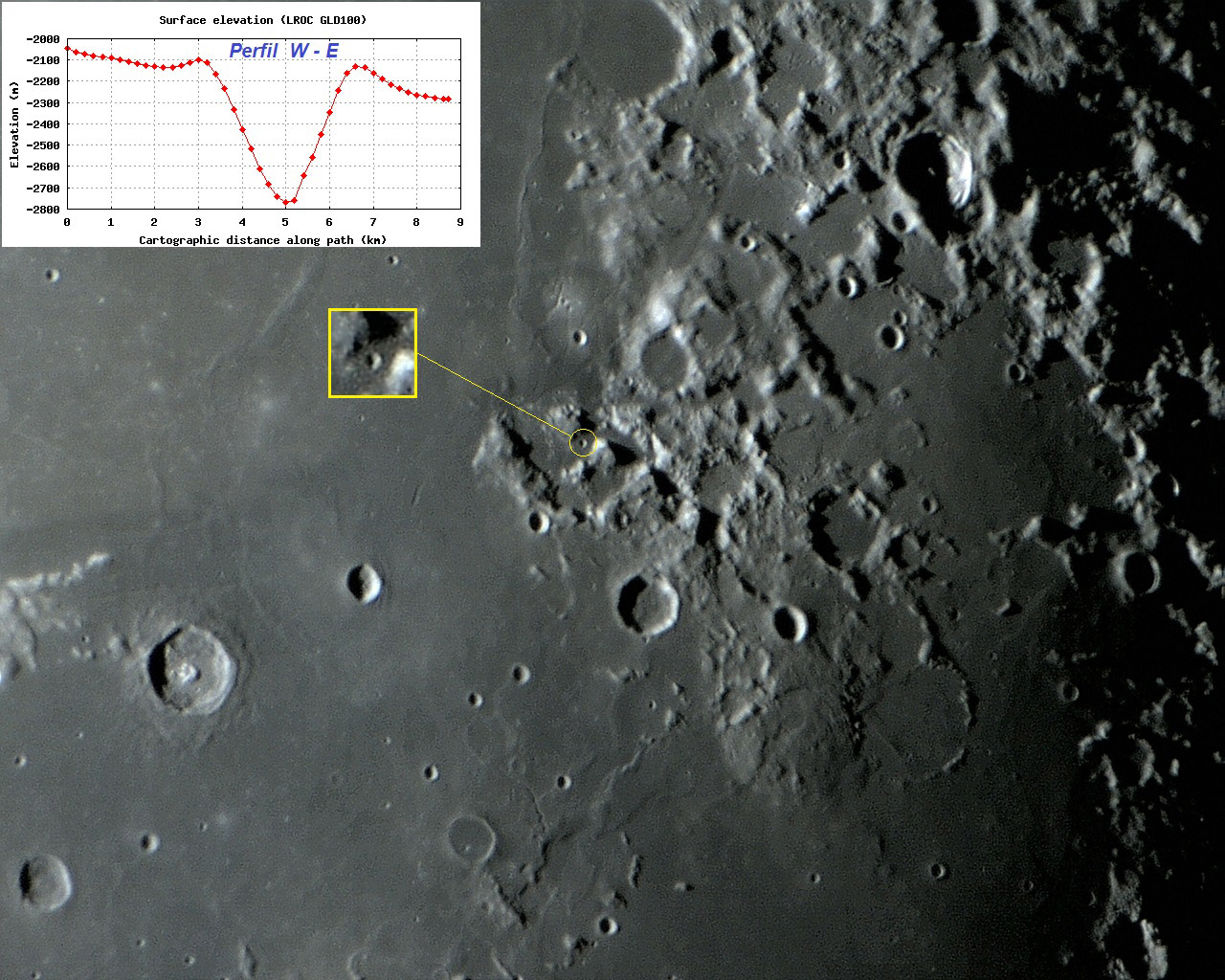Difference between revisions of "September 21, 2014"
| Line 3: | Line 3: | ||
<!-- ws:start:WikiTextHeadingRule:0:<h1> --> | <!-- ws:start:WikiTextHeadingRule:0:<h1> --> | ||
<!-- ws:start:WikiTextLocalImageRule:6:<img src="/file/view/LPOD-sep21-14.jpg/523103502/LPOD-sep21-14.jpg" alt="" title="" /> -->[[File:LPOD-sep21-14.jpg|LPOD-sep21-14.jpg]]<!-- ws:end:WikiTextLocalImageRule:6 --><br /> | <!-- ws:start:WikiTextLocalImageRule:6:<img src="/file/view/LPOD-sep21-14.jpg/523103502/LPOD-sep21-14.jpg" alt="" title="" /> -->[[File:LPOD-sep21-14.jpg|LPOD-sep21-14.jpg]]<!-- ws:end:WikiTextLocalImageRule:6 --><br /> | ||
| − | <em>image by [mailto:tolentino@fumec.br | + | <em>image by [mailto:tolentino@fumec.br Ricardo Jose Vaz Tolentino], Brasil</em><br /> |
<br /> | <br /> | ||
| − | Ching-Te is a tiny impact crater of simple morphology, which is located west of the famous Taurus Littrow Valley, which was the landing site of the last mission of the Apollo program (Apollo 17). The landing point is distant approximately 20 km from Ching-Te, so some of it's ejecta may have been sampled by Apollo 17. According to the altimetric profile of QuickMap, the crater is 3.5 km in diameter, and 670 m deep. Ching-Te is a Chinese male name that has no connection with any specific personality of history (astronomer, mathematician, philosopher, etc). Initially, Ching-Te and other informal (unofficial) names were only created to identify tiny or small features present on detailed maps of Topophotomap series, which were made by NASA, based on the images captured by the Apollo missions. For example, in the legends of the map sheet showing Ching-Te (Topophotomap 42C3S3) is written: <em>Names Information: The following names are unofficial and used only for the identifications of features on this map: CHING-TE, PIT RUDOLPH, RIMA CARMEN and STELLA.</em> Later, in 1976, most of the names for small features, but not all, were officially approved by the International Astronomical Union. A detailed #-D visualization of Ching-Te can be seen [http://target.lroc.asu.edu/qm3d/o2w_3d_767773219_201_80_187_74_0/ | + | Ching-Te is a tiny impact crater of simple morphology, which is located west of the famous Taurus Littrow Valley, which was the landing site of the last mission of the Apollo program (Apollo 17). The landing point is distant approximately 20 km from Ching-Te, so some of it's ejecta may have been sampled by Apollo 17. According to the altimetric profile of QuickMap, the crater is 3.5 km in diameter, and 670 m deep. Ching-Te is a Chinese male name that has no connection with any specific personality of history (astronomer, mathematician, philosopher, etc). Initially, Ching-Te and other informal (unofficial) names were only created to identify tiny or small features present on detailed maps of Topophotomap series, which were made by NASA, based on the images captured by the Apollo missions. For example, in the legends of the map sheet showing Ching-Te (Topophotomap 42C3S3) is written: <em>Names Information: The following names are unofficial and used only for the identifications of features on this map: CHING-TE, PIT RUDOLPH, RIMA CARMEN and STELLA.</em> Later, in 1976, most of the names for small features, but not all, were officially approved by the International Astronomical Union. A detailed #-D visualization of Ching-Te can be seen [http://target.lroc.asu.edu/qm3d/o2w_3d_767773219_201_80_187_74_0/ here]. Use the "Autorotate" and "Vertical Exaggeration" functions below the image:<br /> |
<br /> | <br /> | ||
| − | <em>[mailto:tolentino@fumec.br | + | <em>[mailto:tolentino@fumec.br Ricardo Jose Vaz Tolentino]</em><br /> |
<br /> | <br /> | ||
<strong>Technical details</strong><br /> | <strong>Technical details</strong><br /> | ||
Revision as of 20:12, 17 January 2015
A Crater Without an Owner

image by Ricardo Jose Vaz Tolentino, Brasil
Ching-Te is a tiny impact crater of simple morphology, which is located west of the famous Taurus Littrow Valley, which was the landing site of the last mission of the Apollo program (Apollo 17). The landing point is distant approximately 20 km from Ching-Te, so some of it's ejecta may have been sampled by Apollo 17. According to the altimetric profile of QuickMap, the crater is 3.5 km in diameter, and 670 m deep. Ching-Te is a Chinese male name that has no connection with any specific personality of history (astronomer, mathematician, philosopher, etc). Initially, Ching-Te and other informal (unofficial) names were only created to identify tiny or small features present on detailed maps of Topophotomap series, which were made by NASA, based on the images captured by the Apollo missions. For example, in the legends of the map sheet showing Ching-Te (Topophotomap 42C3S3) is written: Names Information: The following names are unofficial and used only for the identifications of features on this map: CHING-TE, PIT RUDOLPH, RIMA CARMEN and STELLA. Later, in 1976, most of the names for small features, but not all, were officially approved by the International Astronomical Union. A detailed #-D visualization of Ching-Te can be seen here. Use the "Autorotate" and "Vertical Exaggeration" functions below the image:
Ricardo Jose Vaz Tolentino
Technical details
September 13, 2014, 02:17:48 (05:17:48 UT).
Sky-Watcher Collapsible Truss-Tube DOB + Orion StarShoot Solar System Color Imager III Camera + Celestron Ultima 2X Barlow - just one frame.
Related Links
21st Century Atlas chart 8.
Ricardo's [/www.vaztolentino.com.br website]



